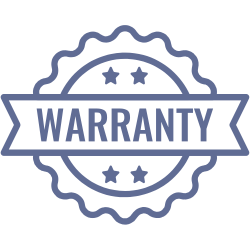Keeping your electric scooter clean not only makes it look great but also helps maintain its performance and longevity. However, improper cleaning can damage sensitive components like the battery, motor, or electronics. Follow this step-by-step guide to safely wash your scooter and keep it in top shape.
What You’ll Need
- A bucket of water
- Mild soap or dish detergent
- Soft sponge or microfiber cloth
- Soft-bristled brush (optional)
- Garden hose with a gentle spray nozzle (optional)
- Dry microfiber towels
- Compressed air or a leaf blower (optional)
- Plastic bags or waterproof covers
Step-by-Step Guide to Washing Your Electric Scooter
-
Turn Off and Disconnect the Scooter
- Power off your scooter and remove any detachable batteries if possible.
- Avoid cleaning while the scooter is charging to prevent electrical hazards.
-
Protect Sensitive Components
- Cover exposed ports, charging sockets, and the display panel with plastic bags or waterproof tape.
- Ensure the battery compartment is sealed and protected from water.
-
Remove Loose Dirt and Debris
- Use a dry cloth or soft brush to wipe off mud, dust, or debris from the frame, wheels, and undercarriage.
- This prevents scratching the surface during washing.
-
Prepare a Gentle Cleaning Solution
- Mix mild soap or dish detergent with water in a bucket. Avoid harsh chemicals like bleach or abrasive cleaners, as they can damage the scooter’s finish or seals.
-
Wash the Scooter
- Dip a soft sponge or microfiber cloth into the soapy water and gently scrub the frame, handlebars, and deck.
- Use a soft-bristled brush for stubborn dirt on wheels or hard-to-reach areas.
- If using a hose, use a gentle spray setting to rinse off soap. Avoid high-pressure water jets, as they can force water into sensitive areas.
-
Rinse Carefully
- Wipe down the scooter with a clean, damp cloth to remove soap residue.
- If you used a hose, ensure water doesn’t pool around the battery, motor, or electronics.
-
Dry Thoroughly
- Use dry microfiber towels to wipe down all surfaces.
- For tight spaces, use compressed air or a leaf blower on a low setting to remove water.
- Let the scooter air dry completely in a shaded, well-ventilated area before reassembling or charging.
-
Inspect and Lubricate
- Check for any signs of water damage or loose components.
- Apply a light, scooter-safe lubricant to moving parts like folding mechanisms or brake cables if needed (avoid getting lubricant on brake pads or rotors).
Important Tips
- Avoid Submerging the Scooter: Never dunk your scooter in water or use a pressure washer, as this can damage the motor, battery, or electronics.
- Check the Manual: Refer to your scooter’s user manual for model-specific cleaning instructions.
- Clean Regularly: Wash your scooter every 1-2 months or after riding in muddy or rainy conditions to prevent buildup.
- Store Properly: After cleaning, store your scooter in a dry, cool place to prevent rust or corrosion.
Why Proper Cleaning Matters
Regular cleaning prevents dirt and grime from wearing down components like bearings, brakes, and electronics. It also helps you spot potential issues, such as loose screws or worn tires, before they become bigger problems. A clean scooter not only performs better but also retains its resale value.
By following these steps, you can keep your electric scooter looking and running like new without risking damage. Happy cleaning—and happy riding!






